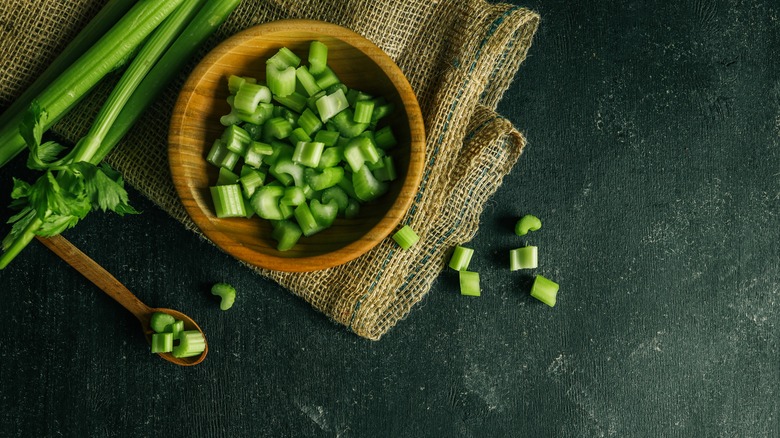Celery is an integral part of all kinds of soups and stews, bringing a vegetal flavor, delicate crunch, and hearty finish. Although it is a necessary component, having fresh celery at the exact time of cooking isn’t always something one can count on. Freezing it ahead of time does ensure that it’s always ready for use, but there are steps you need to take to prevent your celery from turning soggy.
Celery is 95% water and, when frozen, all the liquid turns into ice crystals that damage the celery’s cell walls. As a result, the once-crisp vegetables turn into a mushy mess after thawing. You can freeze celery ahead of time, but it’s important to fortify the vegetable to prevent some of that structural loss. Blanching vegetables (and avoiding the common mistakes) helps to preserve their color, nutrients, and texture so that they will taste as good as new when added to dishes.
The process halts enzyme actions that lead to the degradation of the celery, all while increasing its lifespan. While raw celery will keep for two months in the freezer, blanching it lets it stay for around 12 months. Rinse the celery and remove the leaves before boiling it in salted water for two minutes. Transfer it to an ice bath immediately, then drain the celery and pat it dry. Spread it out on a parchment-lined baking sheet so that it can harden in the freezer before transferring to an airtight bag.
How to add frozen celery to recipes
Thawing food from the freezer is often the first step in cooking, but with frozen celery, you can add it straight into everything from turkey chili to vegan split pea soup. If the dish calls for the celery to be simmered for a few minutes, throwing it in while it’s still frozen helps to maintain some of the crispness that the blanching kept without having to thaw it. The celery shouldn’t take too long to heat through, so add it in the last few minutes of cooking to prevent it from turning soggy.
If you can’t cook it frozen, thaw the celery in the fridge overnight. You can also put it in a colander and run cool water over it until it’s no longer frozen. Although blanching does help to preserve some of the crunch of raw celery, it’s still going to be a little soft once it’s thawed. However, there are still plenty of ways you can put the vegetable to use. It can be simmered in chicken broth and blended to make some silky cream of celery soup, added to a mirepoix, or simmered with other vegetables to make some savory stock.






